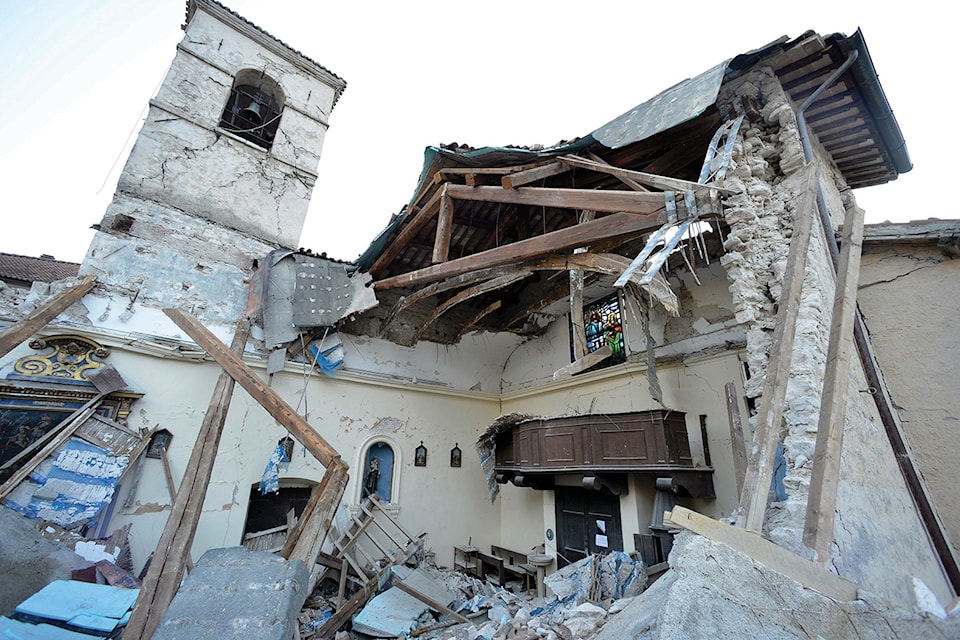By THE ASSOCIATED PRESS
CAMERINO, Italy — The red brick Amatrice city hall resisted the devastating Aug. 24 quake that collapsed buildings all around it, only to crumble under the one-two punch of lesser jolts Wednesday night. They also brought down a centuries-old church tower in Camerino that had withstood both a quake in 1997 and the one in August.
The twin aftershocks Wednesday may have exacted a lesser human toll than the August quake that preceded them, with no one killed under rubble and no reports of serious injuries. But they revealed structural weakness in the mountainous quake-prone zone straddling the Marche and Umbria regions, and added more psychological stress to already traumatized inhabitants.
Premier Matteo Renzi visited the picturesque hill-top university town of Camerino on Thursday, which is pledging to rebuild under the slogan: “The future doesn’t collapse.” His government has earmarked 40 million euros ($43.6 million) to help house those displaced by the most recent quakes, and he promised to get to work on reconstruction “soon and in a serious way.”
“The earthquake is putting us to the test, but Italy is here and we will not leave citizens alone. We are stronger and we will make it,” Renzi said.
The first quake at 7:10 p.m., with a magnitude of 5.4, sent residents into the streets under heavy rain — which authorities said likely saved lives by getting people outside ahead of the second, much more powerful quake.
That jolt, two hours later and eight times stronger, brought down weakened buildings, like the bell tower in Camerino, and rendered unsafe countless homes, on top of those damaged in August. With no time to come up with adequate emergency shelter, thousands slept in their cars.
Authorities on Thursday were scrambling to find housing so that no one would have to spend a second night in their vehicles.
In the town of Ussita, Mayor Marco Rinaldi said his town had been “devastated,” with up to 80 per cent of the houses no longer inhabitable.
In Visso, the mayor estimated that two-thirds of the town’s 1,500 houses had sustained some damage while the remaining residents preferred not to return home until checks were made to ensure safety. “Tonight, we are not leaving anyone in the streets,” Mayor Giuliano Passaglini told residents, laying out options for accommodations.
